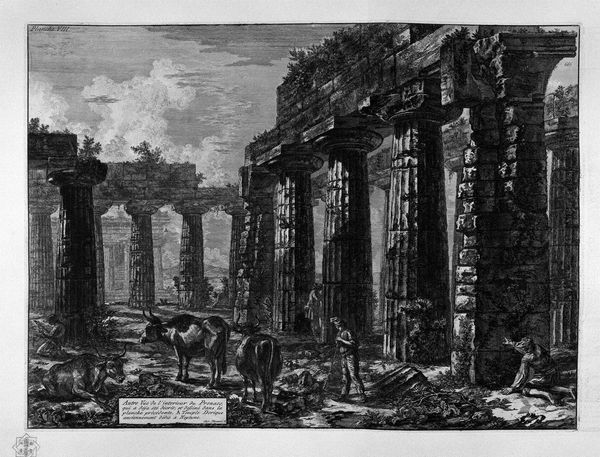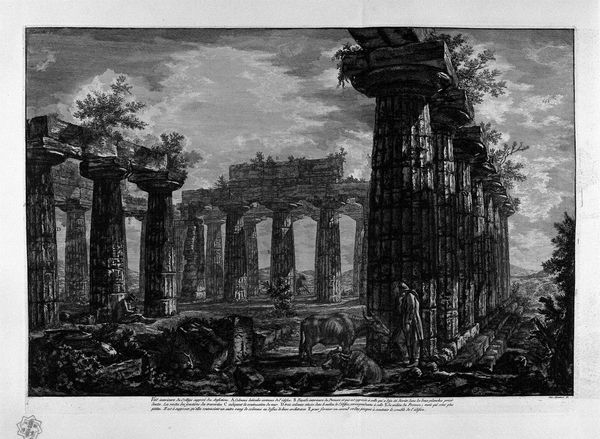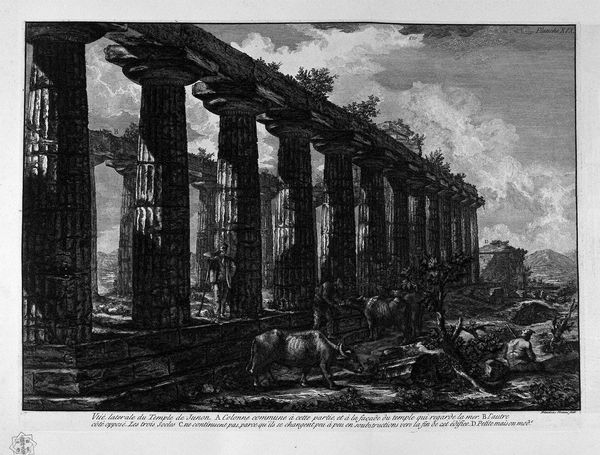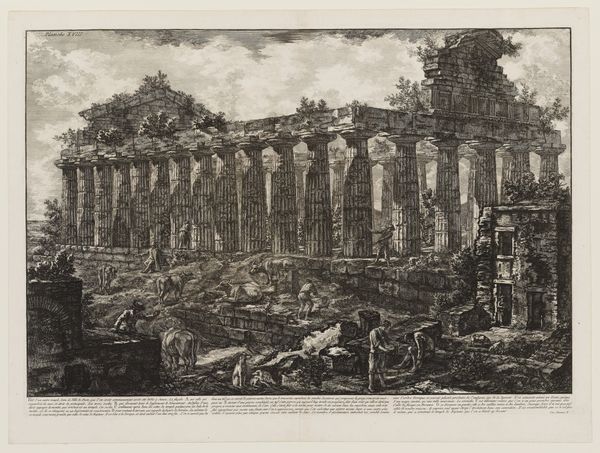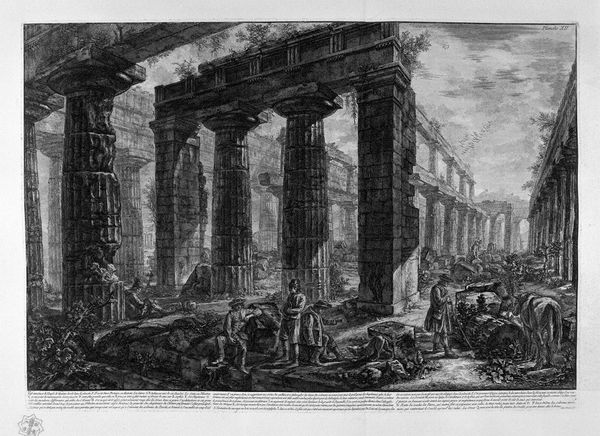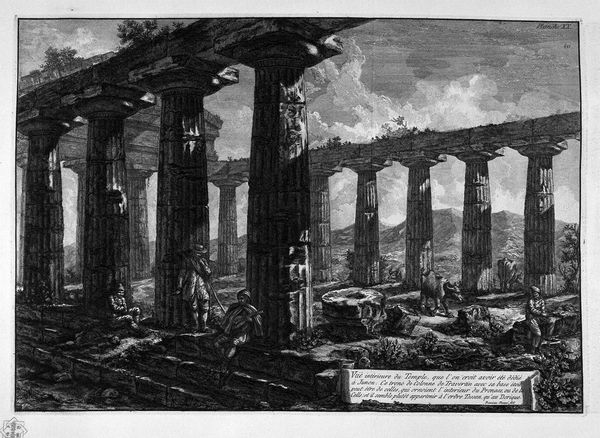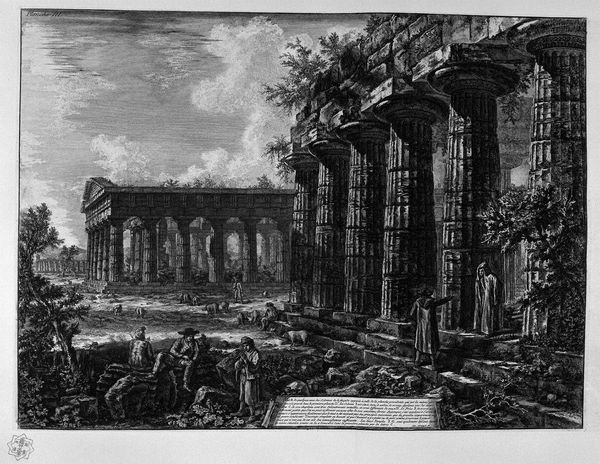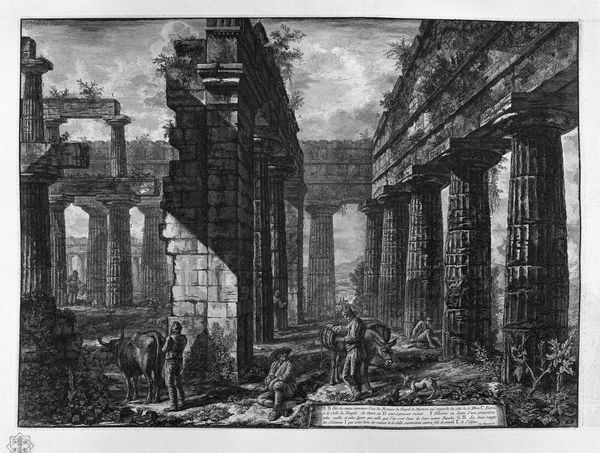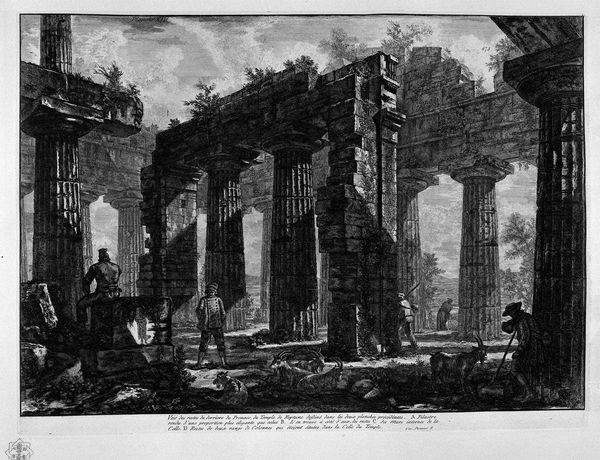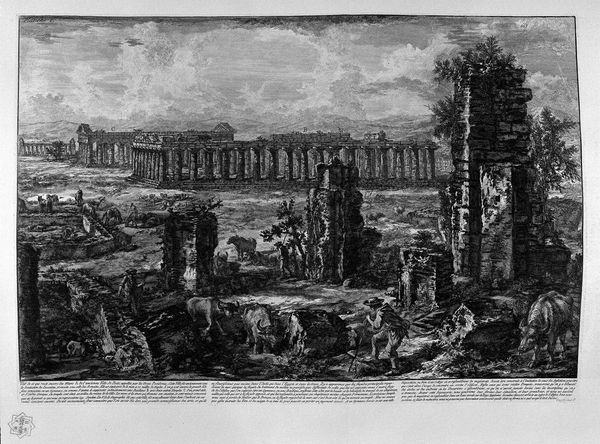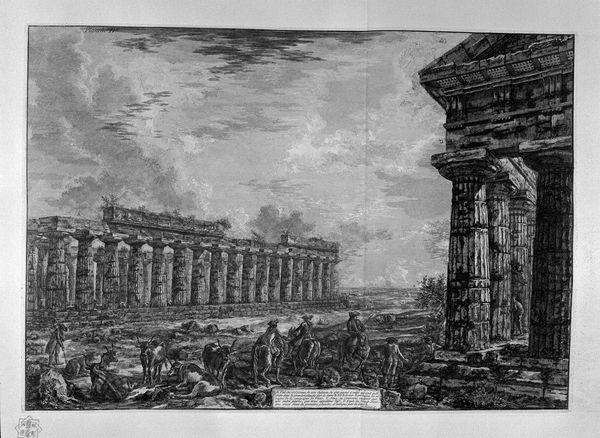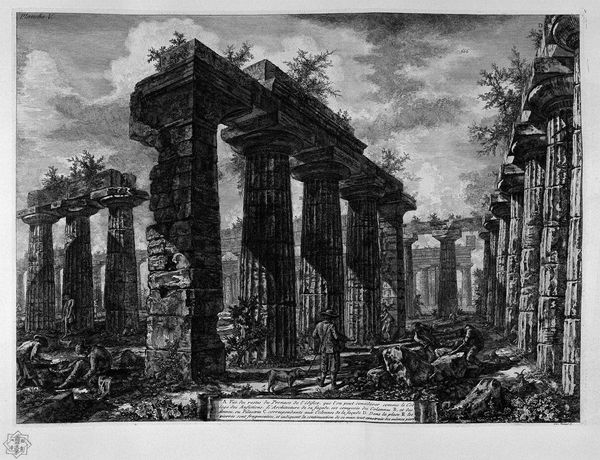
Another View of the Temple in the city of Paestum, believed dedicated to Juno 1778
0:00
0:00
print, etching, engraving, architecture
#
neoclacissism
# print
#
etching
#
greek-and-roman-art
#
landscape
#
history-painting
#
engraving
#
architecture
Copyright: Public domain
Editor: This etching, "Another View of the Temple in the city of Paestum, believed dedicated to Juno" by Giovanni Battista Piranesi, dates from 1778. I'm struck by the contrast between the imposing temple ruins and the everyday life bustling around it. What symbols and cultural meanings do you find resonate in this print? Curator: This image is incredibly rich in cultural memory. Consider how Piranesi presents the temple. It's not just a ruin; it's a powerful, looming presence, yet it’s also integrated into the current landscape, with working people and animals amidst its fallen grandeur. Editor: It's like the past and present are coexisting... what's the effect of that? Curator: Precisely! This juxtaposition prompts a reflection on the passage of time and the cyclical nature of civilizations. Notice how the temple, once a symbol of power and belief, is now being reclaimed by nature and everyday life. It represents the continuity of human experience—a poignant reminder that even the most magnificent structures eventually return to the earth, only to be built upon again, either literally or figuratively. The ruined state becomes a potent symbol itself, doesn’t it? What do the ordinary people suggest to you? Editor: They bring it down to earth. It’s not just about gods and emperors anymore; it’s about daily survival, building a new world on the fragments of the old. It becomes…relatable. Curator: Indeed! And what about the animals, how do you interpret their presence here? Editor: They reflect how history remembers nothing, with everyday animals passing freely through such a culturally significant site. The scale of the temple almost gets lost on the common passersby! Curator: An interesting observation. Their nonchalance, indeed, seems to mock our self-importance. Overall, what has shifted in your perspective after exploring the image more? Editor: I see now that it’s more than just a depiction of a ruin; it’s a layered commentary on history, memory, and the enduring spirit of humanity in the face of time. Thanks for your insights!
Comments
No comments
Be the first to comment and join the conversation on the ultimate creative platform.

